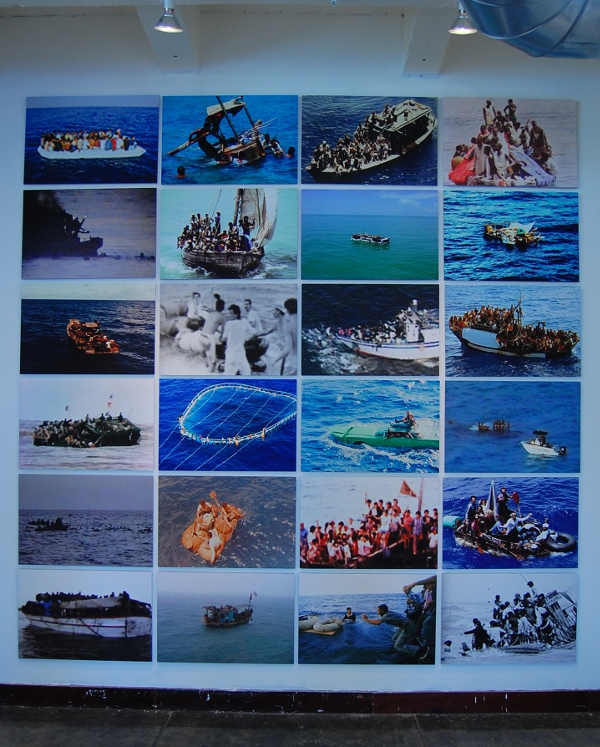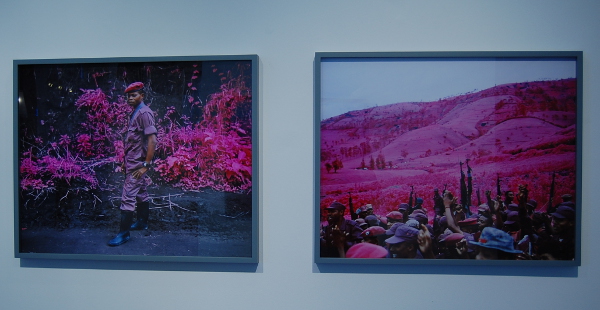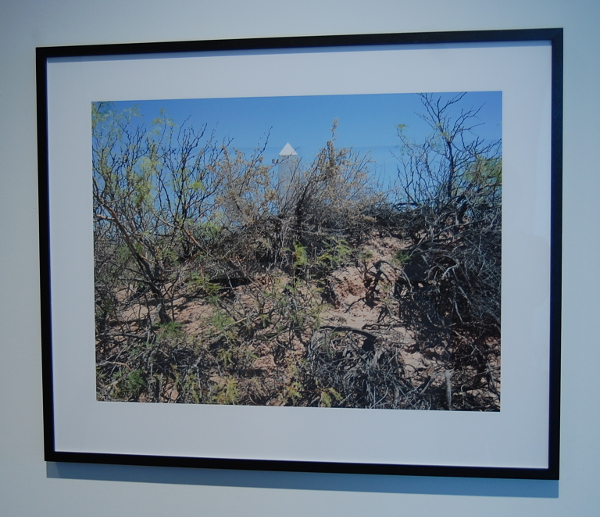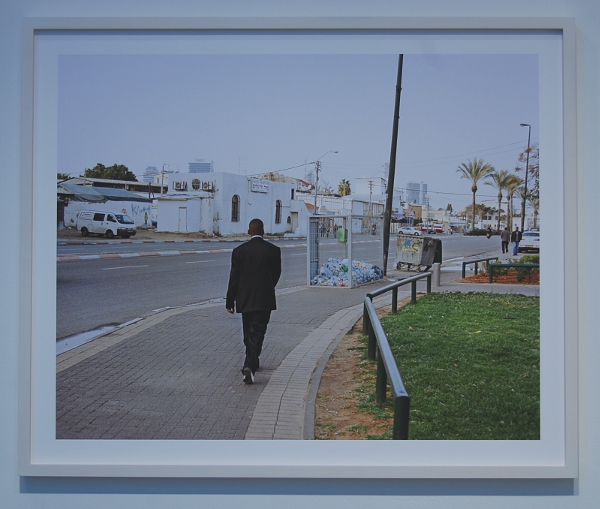
PPAC’s “Un-drawn” brings displaced populations to light
The lives and journeys of the world’s displaced and immigrant populations are put in front of the lens for the Philadelphia Photo Arts Center‘s exhibition “Un-drawn.” In this show, the Knight Arts grantee‘s gallery space displays the work of four artists in a moving compilation of the struggles, sojourns and everyday lives of those among us who have, for one reason or another, been forced to leave our home.
Particularly staggering is Xaviera Simmons’ wall-sized spread of photographs documenting the exodus of overcrowded refugee nautical vessels from all around the world. These images are appropriated from various sources and often appear as blurry, grainy representations of the boats they depict. Much like the roughness of the photographs themselves, some of the crafts appear to be improvised out of cars or buoys, and almost all of them are spilling over with passengers. The desperation of these travelers is more than evident and one cannot help but suffer vicariously. This empathetic installation presents an unfiltered look at the pain and persistence with which people must pick up the pieces and move to new lands, and surely it does not even begin to scratch the surface of these ordeals.
Richard Mosse, “General Février” and “La Vie en Rose.”
Utilizing obsolete military surveillance technology – an infrared film called Kodak Aerochrome – Richard Mosse captures scenes of the ongoing conflict in the Democratic Republic of Congo. This series literally views conflict through rose-colored lenses, but strangely enough, ones originally intended for war. Despite the otherwise beautiful fuchsia backdrops, these scenes are taken in the middle of a convoluted and constantly changing war zone. The guerrilla fighters here often change sides and allegiances, living a nomadic lifestyle of perpetual instability. In some photos, steely-eyed soldiers stand watch or hold their assault rifles high into the sky, in sharp contrast to the pink plants around them. In others, surreal landscapes would seem more like a Dr. Seuss illustration if not for the stagnating hostilities behind every hill.
David Taylor, “Border Monument No. 10, 2008.”
David Taylor approaches the invented and invisible lines of national boundaries made very real by their present posturing. Mexico’s border with the United States – his focus – is a controversial topic, to say the least. Originally demarcated with stone obelisks and placards, the expanse is now often divided with large metal fences near San Diego/Tijuana and El Paso/Juarez. Elsewhere these markers hide in brush, much like those avoiding border patrol officers, or tower over cities as a silent reminder of the political divide between these two lands.
J Carrier, “Man Walking, Tel Aviv, Israel.”
Another hotbed of territorial dispute is the country of Israel, which J Carrier examines by way of the candid. The daily lives of Orthodox Jewish residents in prayer or suited men strolling down the street present a world comprised largely of recent (20th century) immigrants. Snapshots of scenery contrast with crane machine games reaching for cash while recycling bins and discarded cigarette packs dot the streets. This is a world populated by Jewish Israelis in a formerly Palestinian land and is often characterized by its violence in the media. Carrier instead strays from the sensational to represent the commonplace, the private moments of individuals, and the public thoroughfares of cities.
This exhibition traces common threads of a global phenomenon in bold, yet sometimes reserved ways. Displaced populations and the many affected exist worldwide for innumerable reasons, and often fly below the radar for those of us fortunate enough to live in comfort. This Philadelphia Photo Arts Center show brings their stories to light in intelligent and emotional ways. It will be on view through May 17.
Philadelphia Photo Arts Center is located at 1400 N. American St., Philadelphia; [email protected]; philaphotoarts.org.
Recent Content
-
Artsarticle ·
-
Artsarticle ·
-
Artsarticle ·



